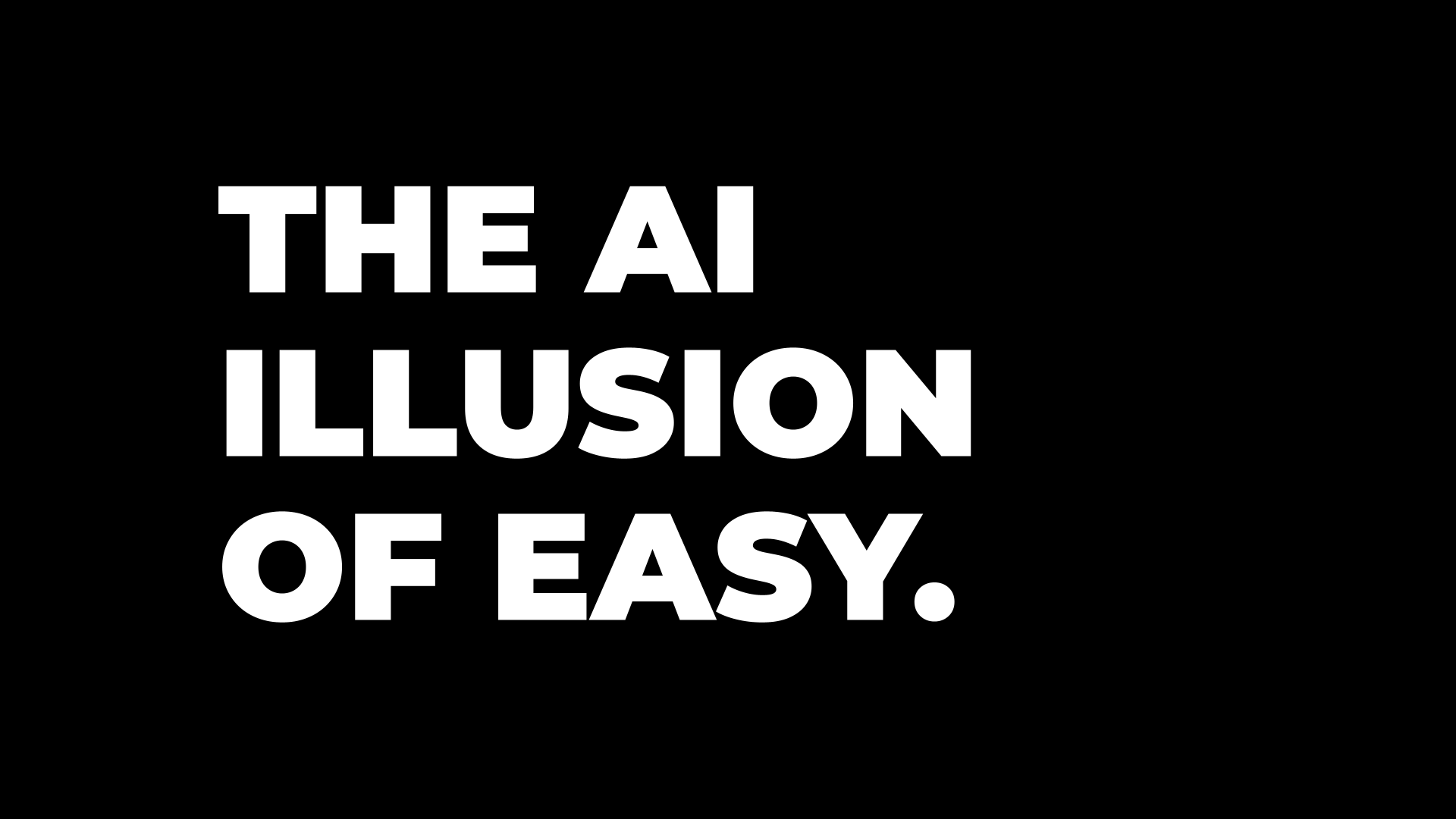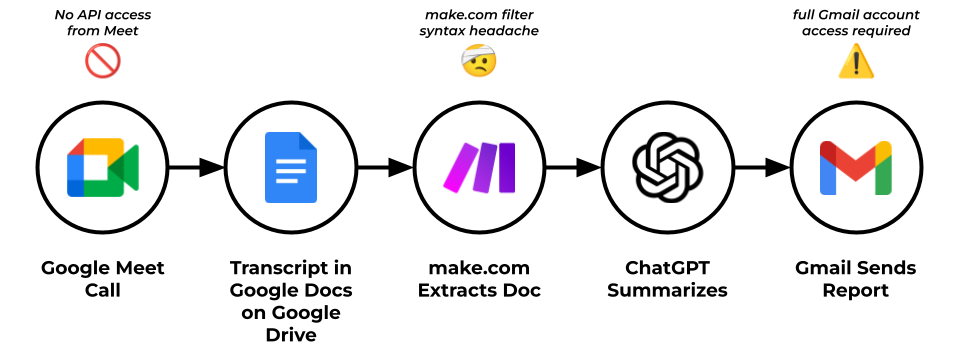
By Gerard Pietrykiewicz and Achim Klor
Achim is a fractional CMO helping various B2B GTM teams with AI adoption. Gerard is a seasoned project manager and executive coach helping teams deliver software that actually works.
Most AI automation tools look easy in demo videos. But when we tried building a simple system to summarize calls and send reports, reality hit hard: clunky UIs, unexpected limitations, and lots of wasted time. Still, when used right (especially for early prototyping), AI can be a breakthrough in team alignment. This article shares what worked, what didn’t, and where we go from here.
So, we recently jumped into the whole AI automation thing. The goal was simple: use make.com to build something that would summarize weekly Google Meet calls and email a neat report.
Easy, right?
All those flashy Instagram and LinkedIn videos had led us to believe it would be. We've worked with Zapier before, and this would be a similar, straightforward experience, right?
Not so fast.
First hurdle: Google Meet doesn’t just hand over transcripts with an API. Nope. They’re stuck in Google Docs in Drive. You have to give make.com access to a specific folder. Then came a “simple” filter for recent documents. Simple, unless you don’t know the exact code. The “intuitive” interface felt more like a maze when what was sorely needed was real control.
Then, to send the summary via Gmail, you have to link your entire account to make.com. That can make anyone uneasy, to say the least. Finally, setting up ChatGPT with API keys and managing credits wasn’t hard on its own, but put it all together, and it became a bigger headache than expected.
The make.com AI assistant, supposedly there to help, burned through free credits like kindling while trying to resolve a basic filter issue. The frustration wasn’t with the idea; it was with how hard it was to “make” it work. After an hour wrestling with the interface, it was clear that our time was better spent elsewhere.

Stephen Klein, CEO of Curiouser.AI, hits the nail on the head here in this LinkedIn post. He argues that most of the “agentic AI” buzz is just that. Buzz.
Today’s AI “agents” are often just scripts, not independent thinkers. We’re years away from true autonomous AI.
Klein is right. Businesses risk chasing inflated promises, throwing money at “Hype-as-a-Service” instead of real solutions.
Despite the roadblocks, there is reason to be optimistic. A recent “vibe-coding” experiment (quickly mocking up a concept using AI tools without overengineering) is a good example.
For non-technical managers leading software teams, you can use it to quickly build a basic idea prototype. We tossed the code, sure, but it completely changed how the team communicated. It cut down on all the detailed upfront planning we usually do.
Could we build a full, production-ready solution with vibe-coding today? Probably not. But the immediate wins (clear talks, faster decisions, smoother development) were huge.
One time, we were stuck on a feature. Everyone had a different idea of what “simple” meant. We spent hours in meetings, just talking in circles. With vibe-coding, I cobbled together a rough version in an hour. We put it on the screen, and suddenly, everyone saw the same thing. The room went from confused murmurs to “Oh, I get it!” in seconds. It was a game-changer for clarity.
Gerard Pietrykiewicz
This experience shows one clear truth: AI tools are harder to use than the marketing videos suggest. And no, we’re not ready to fire all our developers. But those who stick with it, who push past the early bumps and use these tools wisely, will find a real edge.
New tech always has growing pains. Think about how easy GenAI has made things. It went from complex APIs to something almost anyone could use overnight.
Yes, Stephen Klein is right to warn us about blindly following the hype. But his warnings shouldn’t stop us from trying things out. They should guide us to explore with care and common sense.
As leaders, our challenge is to bridge limits by pushing for simpler, more intuitive solutions. Maybe AI itself should design user interfaces that actually make sense for managers, not just developers.
It reminds me of the early days of the internet. Back in the 1980s, it was powerful, but only for those who understood complex commands. Then along came the web browser (anyone remember Netscape?), a simple interface that opened the World Wide Web to everyone. AI needs its browser moment.
Achim Klor
Like any new tech, AI tools will continue to trip us up. But every experiment makes us better. The more we test, the more likely we are to build the future we want, not just buy into the one being sold.
If you like this co-authored content, here are some more ways we can help:
Cheers!
This article is AC-A and published on LinkedIn. Join the conversation!